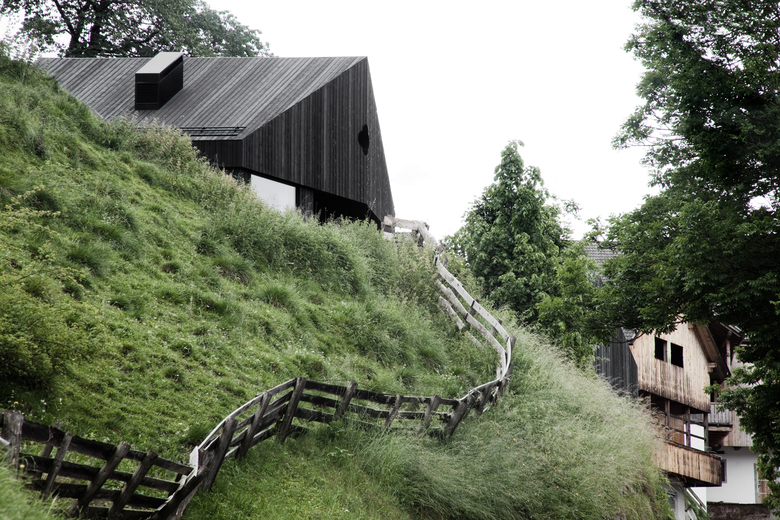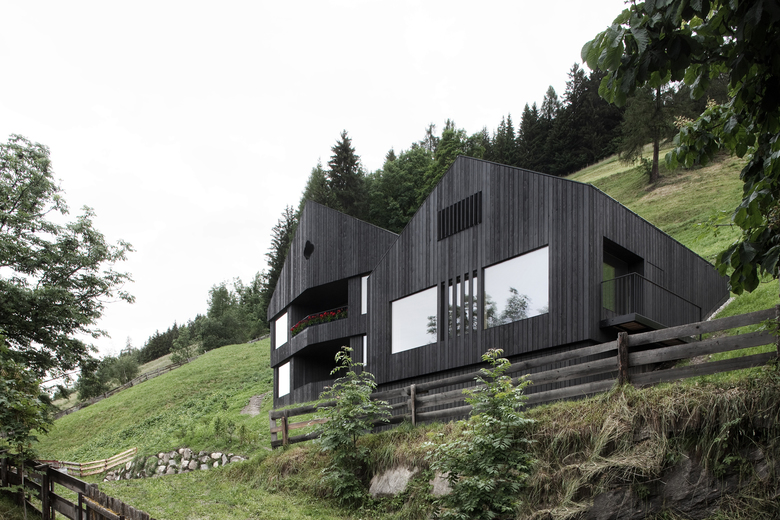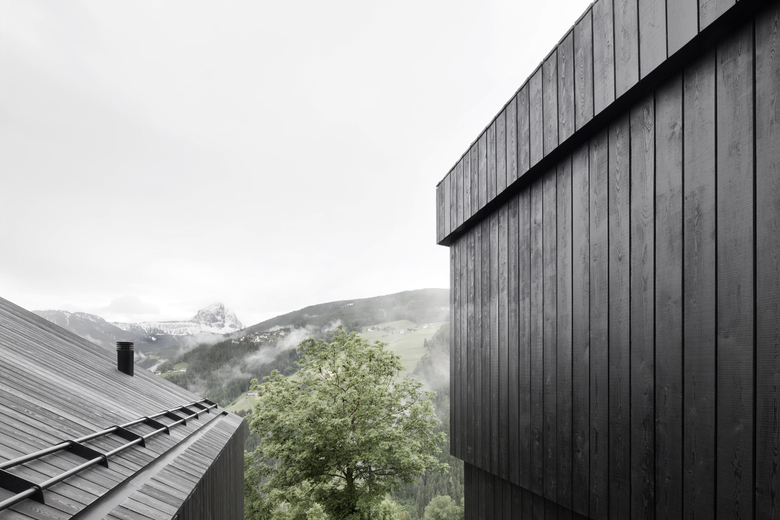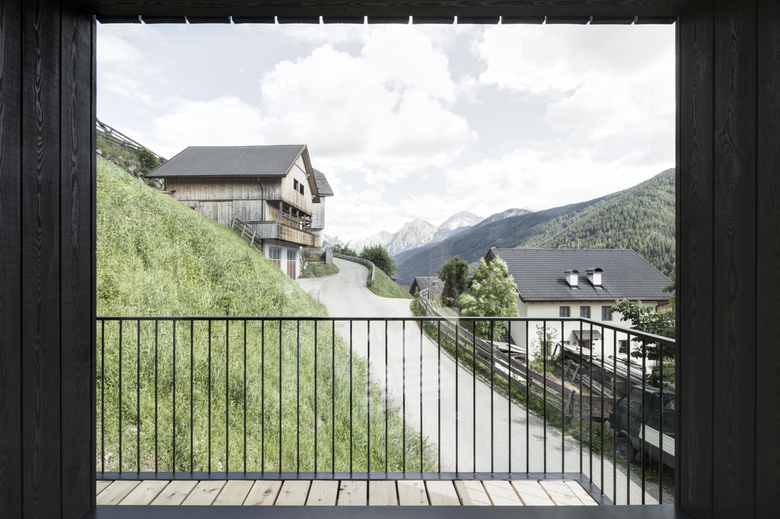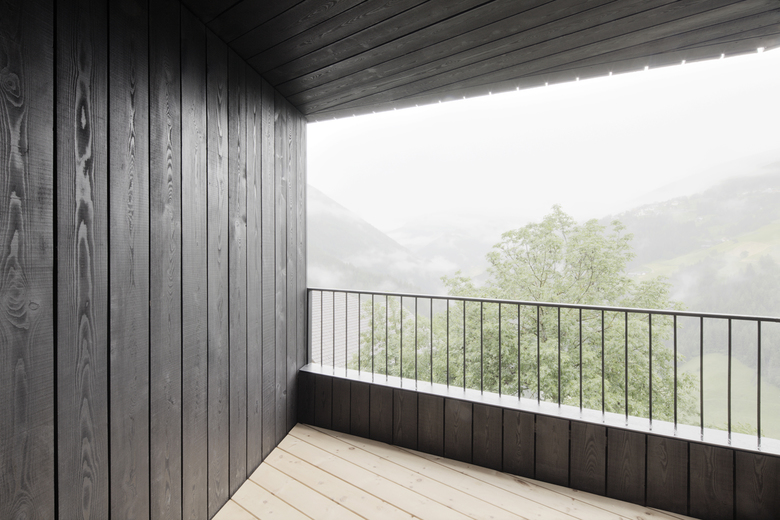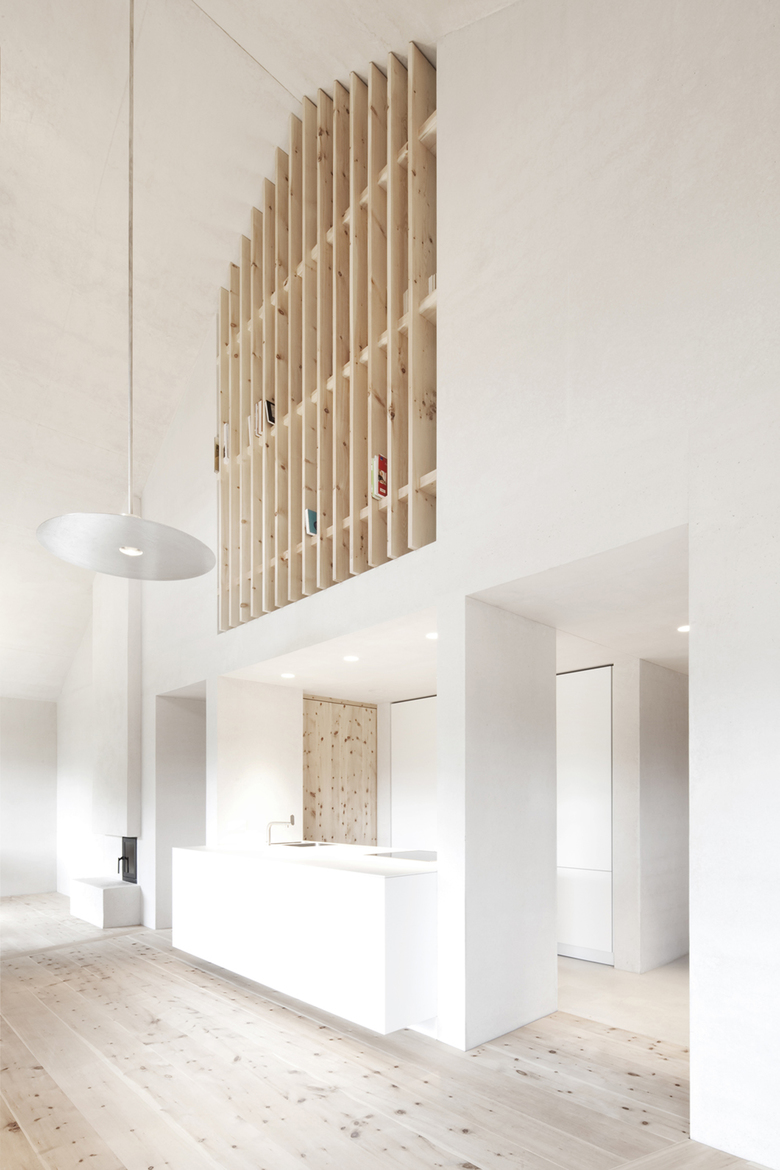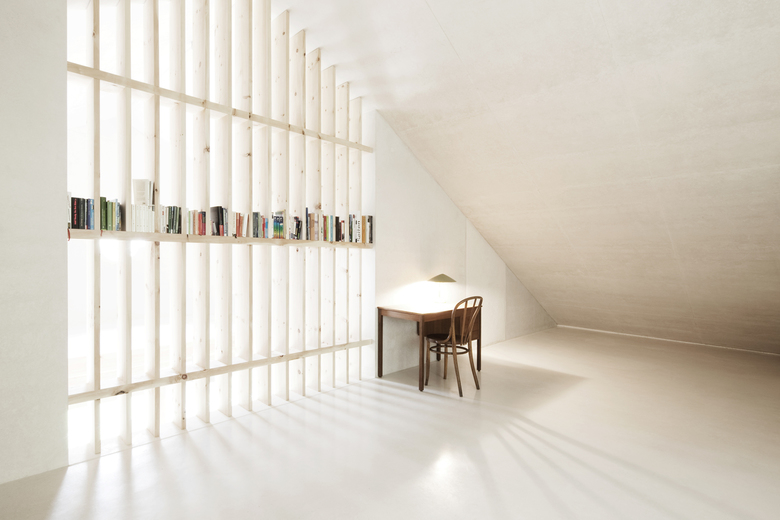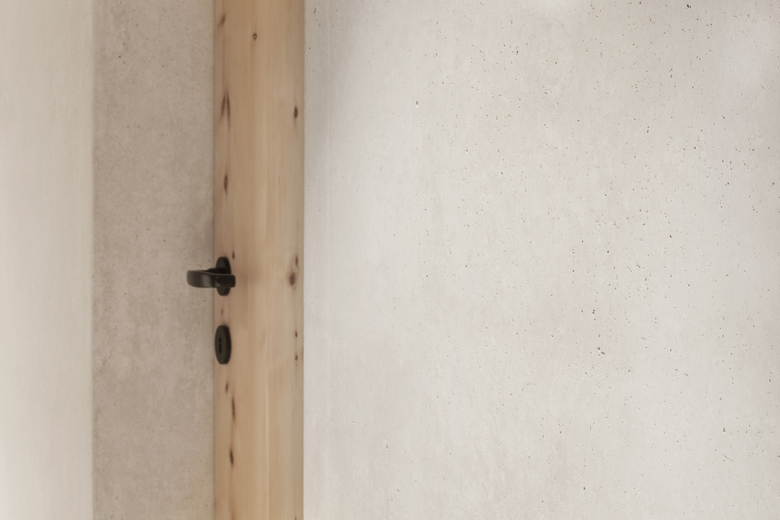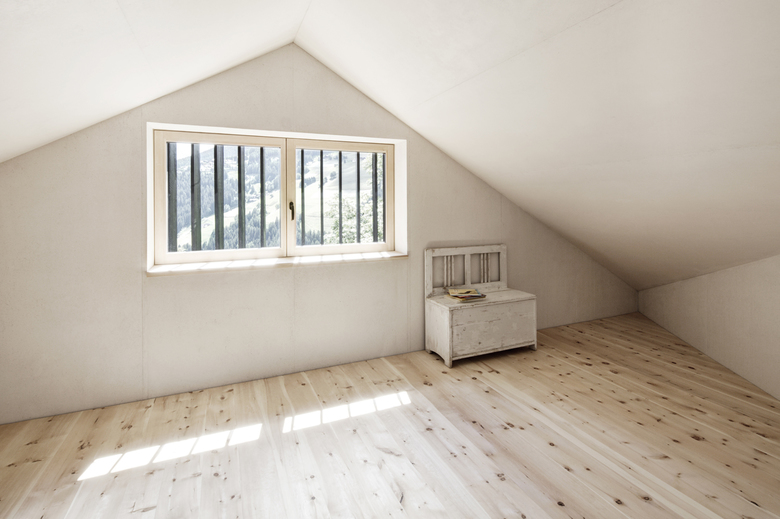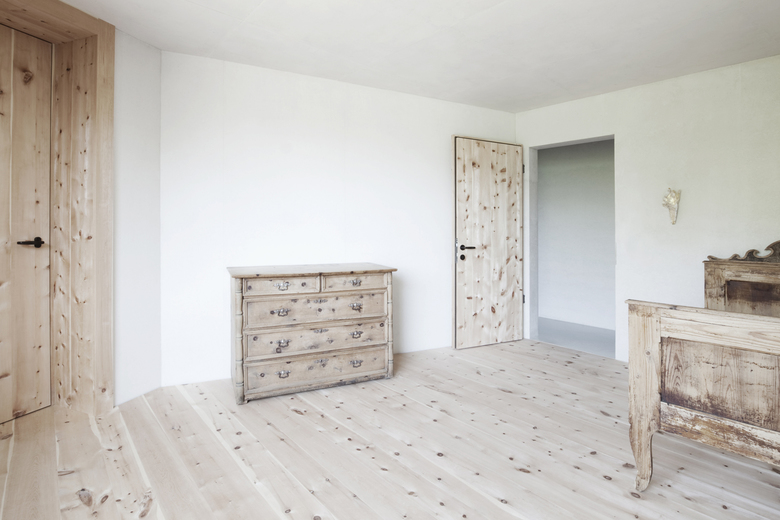Chalet La Pedevilla
Pliscia/South Tyrol, Italy
In the heart of the dolomite alps and amongst the most impressive mountain ridges, the small hamlet of Pliscia is situated more than 1200m above sea level. Hamlets are small urban settlements, called ‘viles’ in the regional dialect, a unique cultural and architectural tradition which evolved throughout the centuries in these areas. Characterized in their coherence and independence, each one of these small clusters of houses and farms represent a community, where neighborhood, solidarity and mutual assistance are qualities which are of fundamental and remarkable significance, still up until today.
Most of the old farms in this hamlet appear to be a pair-style type, consisting at least of a tenement and a farm house. In this respect, the two new buildings of ‘la pedevilla’ make no exception, with one of them being inhabited all-year-round and the other one to be let as a holiday home. The latter, in its sense, can be understood as derivation of a former farm building. Regional ornaments and characteristics, like the gable roof, loggias and the common timber facade were incorporated into the design, portrayed deliberately in a singular and independent rendition.
All structural elements of the buildings have been casted in exposed concrete with an aggregate of dolomite rocks, resulting in a warm-white color. Additionally, the applied types of timber, mainly larch and pine, used for hand-hewn solid timber flooring, windows and doors, are of regional origin.
The outer timber shell with its inbound loggias has been kept consistently in black with a red/brown undertone, matching the naturally vivid surrounding in a gentle way.
Although living habits are changing consistently by the influence of modern society, terms like sustainability & self-sufficiency had to be regarded as precious since generations in these remote mountain regions. Hence, the site has not only its own water source and the buildings even ensure their energetic independency by taking advantage in the usage of geothermal plus solar energy.
By considering traditional or cultural values and customizing them for our modern life, the buildings’ reduced architecture is introducing a modern reflection on farming life of the old.
- Architects
- pedevilla architects
- Year
- 2014
- Client
- privat
- Total Cubature
- 1.520 m³
- Construction Costs
- 0.8 Mio
- Project and Realization
- 2012-2013
Related Projects
Magazine
-
-
Building of the Week
A Loop for the Arts: The Xiao Feng Art Museum in Hangzhou
Eduard Kögel, ZAO / Zhang Ke Architecture Office | 15.12.2025 -

